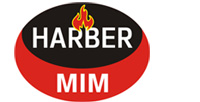Powder injection molding (PIM) is a technology for manufacturing micro, high-precision metal or ceramic components. In PIM, metal or ceramic powder is first mixed with a binder, then injection molded and densified through sintering to obtain the product. Compared with traditional processes, PIM technology has the characteristics of high precision, uniform organization, excellent performance, and low production cost. It can manufacture small mechanical parts with complex shapes, high precision, and high-performance materials in an economical and mass production manner, such as micro gears, micro fans, micro medical instruments, automotive micro device parts, etc.
Difficulties in PIM process production
Underinjection: Poor material fluidity, small product thickness, low temperature, short injection time, and low injection pressure can all cause the finished product to not be fully filled.
Weld marks: During the injection process, the molten adhesive may be divided into several streams due to its structure, and linear marks may appear at the confluence, which can affect the appearance and strength performance of the finished product. When the exhaust is poor, the gate position is improper, the speed is too slow, and the temperature is too low, it will further reduce the quality of the fusion line.
Cavitation: During the injection process, if the air inside the cavity is not discharged in a timely manner and is wrapped or compressed to the end of the flow, it will cause surface air pockets on the finished product, affecting the appearance quality and strength performance. It often occurs in situations such as large product thickness, poor mold exhaust, and excessive injection speed during the process.
Black line: During the injection process, due to changes in shear rate, the metal powder separates from the binder, forming linear defects with poor glossiness.
Cracking: The phenomenon of cracking in products after degreasing sintering may be caused by stress accumulation or uneven stress distribution during the forming process, and residual stress is released in subsequent processes. It is also possible that the thickness difference of the product is significant, and uneven shrinkage stress leads to fracture.
Deformation: refers to the bending or twisting of formed products after cooling, which directly affects the appearance and dimensional accuracy of the products, and even causes the products to be scrapped. There are various reasons for deformation, such as uneven cooling of the product, internal heat accumulation and premature ejection, uneven thickness of the product, and unreasonable structural design.
The direction for improving the quality and efficiency of PIM molding parts
Refining formula: When selecting binders, consider the difficulty of forming the product structure, and prioritize selecting ones with better fluidity while maintaining the functional requirements of the embryo.
Forming equipment: Choose a dedicated metal powder ejection machine, equipped with dedicated wear-resistant screws and barrels, extended nozzles with heating control, precise screw position control, high response motors, etc., to provide a wider process window and meet the needs of high precision, good efficiency, and fast speed. In addition, it is equipped with automated pick-up equipment to fully protect brittle products and prevent damage caused by free fall.
Degreasing equipment: There is currently a mixed degreasing furnace on the market that can simultaneously meet various degreasing requirements, including single solvent degreasing, steam degreasing, condensation steam degreasing, embrittlement degreasing, siphon degreasing, and can also perform multiple processes of degreasing simultaneously, achieving rapid removal of adhesives. If the production process in the factory is diversified, this mixed degreasing equipment can greatly improve efficiency.
Sintering equipment: generally divided into vacuum furnace and continuous furnace. Vacuum degreasing sintering furnace is an intermittent (batch) production equipment that uses vacuum technology to sinter materials. It is used for the secondary degreasing (hot degreasing) and sintering process of metal powder injection molded products. Continuous degreasing sintering furnace is a continuous production equipment that can be used for the entire process of PIM products from raw materials entering the furnace to sintered materials exiting the furnace, and can operate continuously without interruption. It is particularly suitable for the production of large-scale products, which is conducive to improving the scale effect of enterprises and significantly reducing the unit cost of large-scale product production.
Hot runner selection: The advantage lies in saving expensive powder material costs, avoiding prolonged cooling time caused by coarse cold runners, reducing wear of powder mixtures on molds, and reducing injection pressure.
Conclusion
Each process step in metal powder injection is extremely important. In order to achieve the goal of high density, high precision, high strength, and minimal subsequent processing, each step needs to be carefully evaluated and studied to avoid discovering defects only after degreasing and sintering. At this time, the metal injection material can no longer be recycled. The importance of important processes such as mixing, granulation, injection, degreasing, sintering heat treatment, and stress distribution in the mold system cannot be ignored. Early prevention of defects is the best way to solve them and meet the high-precision requirements of high reliability PIM products.













